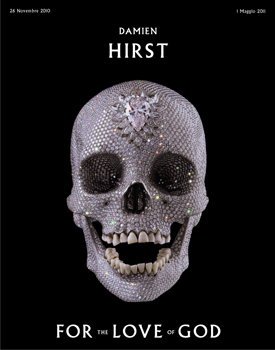Posted by Richard Rawlinson
I first came across this Latin phrase as a teenager reading Evelyn Waugh’s Brideshead Revisited. Narrator Charles Ryder finds the words inscribed on a skull displayed in his bedroom. ‘Even in Arcadia, there I am,’ is the translation. Death, the great equaliser, prevails even in the most utopian lands, as certain in the stately homes of England as the slums of Calcutta, the parched plains of Africa or the war-torn streets of Iraq.
The phrase was also chosen as the title of a Nicolas Poussin painting (above), now in the Louvre, depicting classical shepherds gathered round a tomb in their rural idyll.
Ornamental skulls and paintings reflecting mortality are known as memento mori (remember that you will die) or vanitas, reminders of the vanity and transcience of earthly goods and pursuits. Many of the still lives of the 16th and 17th century featured skulls alongside decaying fruit and hourglasses, symbolising the brevity of life.
Among the hundreds of friars’ skulls adorning the ossuary chapel of Santa Maria della Concezione dei Cappuccini in Rome is an inscription translated to mean: ‘As you now are, we once were; as we now are, you one day will be’.
I believe we’re still acutely aware of death, but fewer people confront it head on anymore. We see it constantly in the media and films, and when we pass cemeteries. We see skulls in artwork in galleries and even printed on cushion covers, but they somehow don’t appear like the modern equivalent of memento mori or vanitas.
Damien Hirst’s sculpture, entitled For the Love of God (apparently a quote from his mother when she heard what he was going to do next) consists of a platinum cast of a human skull encrusted with diamonds. One critic proclaimed it as ‘victory over decay’, perhaps the ultimate vanity.
If an undertaker put a skull in his shop window, now that would be memento mori. If a funeral plan poster depicted a skull and the line, ‘As you now are, we once were; as we now are, you one day will be’, now that would be vanitas.
Death is keenly felt but we no longer speak its name. Some say the decline of faith in the Resurrection of Christ is a reason why death is now often deemed taboo. Then again, I’ve met atheists who are matter-of-fact about death, and more comfortable with it as a result of perceiving it as the end of life rather than the beginning of afterlife, whether heaveny paradise or otherwise.
In Evelyn Waugh’s day, priests were known to end sermons with the line, ‘The tree that contains the wood for your coffin is growing in the forest; indeed it may have already been cut down’. No more. Waugh’s novel, The Loved One, was so called to spoof the coy vocabulary used to describe dead people in the Los Angeles funeral business, Whispering Glades.
His satire is now the norm when our ‘loved ones’ ‘pass away’ in hospital, to rest briefly at the undertaker before being blitzed to ashes. There might come a time when there are few skulls left under 100 years old. Skulls: a dying breed!




Fascinating, thank you Richard. It is a puzzle why the frequent mentions of death in our culture often don’t seem to work at any significant, memento mori level. Maybe we’ve moved on (mostly) from the Victorian obsession with death and its trappings to a casualisation of death, endlessly enacted in entertainment media but very infrequently encountered, by most of us.
BTW, I’d think “for God’s sake, what next” is a pretty sane reaction to anything Damien Hirst produces, but that is no doubt an elderly reactionary’s view of the art circus, sorry, world.